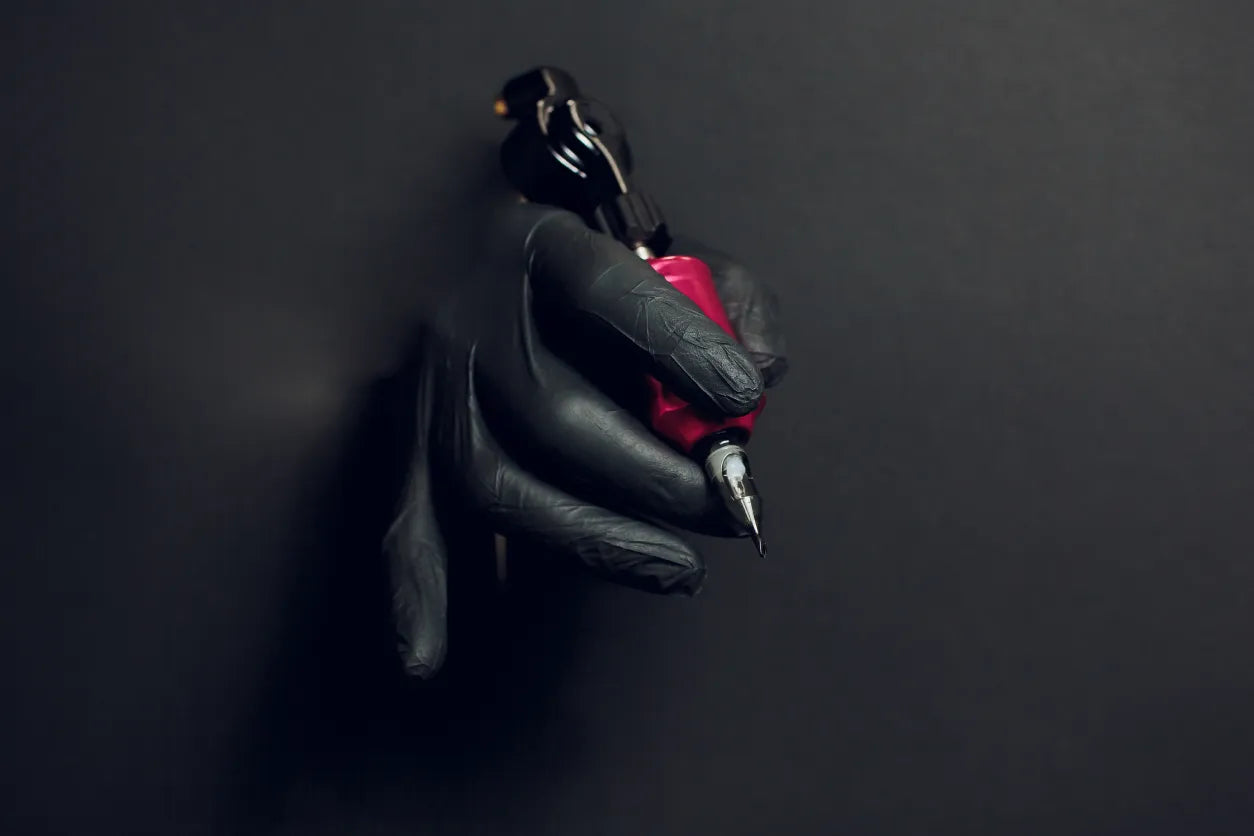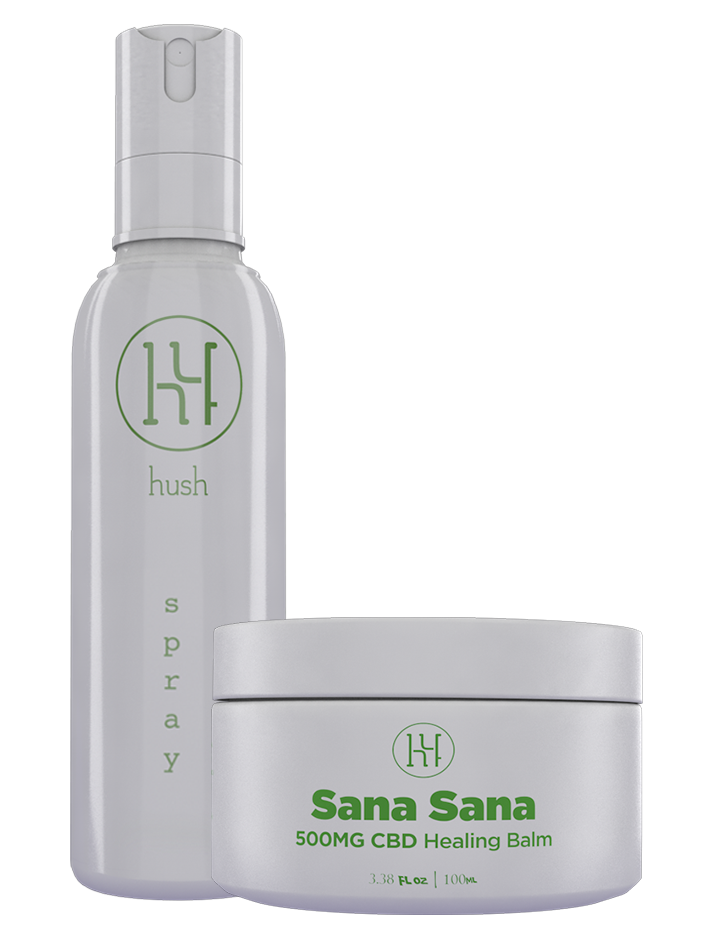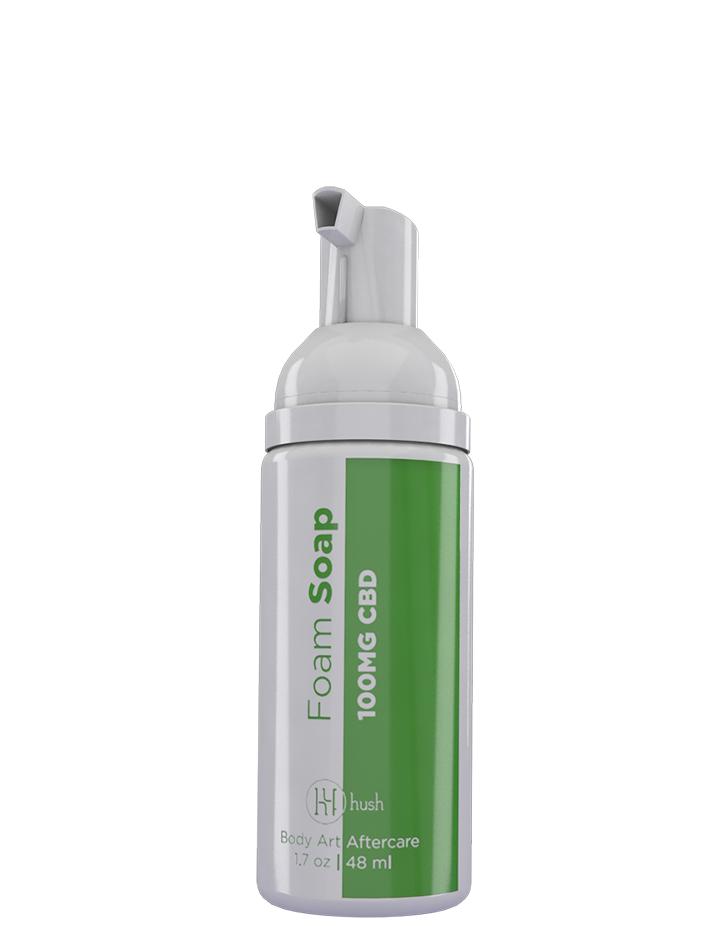If you’ve only ever seen a tattoo machine at work, it might look a little alarming. Those needles are sharp and moving really fast, but exactly how deep does a tattoo needle go? The short answer — only as deep as it needs to go and probably not as deep as you think.
Here’s what you need to know about tattoo depth and how HUSH can make your experience painless.
First Off, How Do Tattoos Actually Work?
When you get a scratch on your skin, it doesn’t stick around forever. A small scratch will completely disappear as it heals, leaving no evidence behind. A tattoo is supposed to leave permanent evidence, which means the ink needs to go deeper than a scratch.
Tattoo pigments stay suspended between layers of your skin, held in place by immune cells that isolate them and keep them from wandering around. They’re like the glue that keeps your tattoo together, stuck right where your artist put it.
Your body can only trap and hold the ink if it's placed at the right depth. If the tattoo is too shallow, most of the ink will leave during the healing process. If it’s too deep, you won’t be able to see your tattoo’s defined edges. Your tattoo will look cloudy, murky, blurry, and a little scarred up.
Your tattoo’s crisp, gorgeous lines only stay well-defined if it’s placed at exactly the right depth, which is why depth is so crucially important.
How Deep Does a Tattoo Needle Go?
A tattoo needle goes through five layers of the epidermis, which sounds pretty deep. In reality, the layers of our skin are more like layers of flower petals or onion skin.
There are three main layers of skin, and each layer has a lot of very thin sublayers. Your tattoo only pieces through the top layer, laying the ink right onto the surface of the next layer below.
The top five layers of the epidermis are only about 1/16th of an inch, or between one and two millimeters. For perspective, a grain of rice can be nearly five times as long. It’s a really shallow depth. At the right depth, tattoos look beautiful for decades and don’t leave any visible scars behind.
How Does a Tattoo Artist Know How Deep To Go?
Tattoo machines allow artists to set their needle depth. There may be some situations where your tattoo artist wants to go a little less deep, like if part of a tattoo design has a faded or blended effect. Your artist might need to go a little deeper if they’re covering up a scar or doing a blackout cover-up of a tattoo you don’t love anymore.
Proper equipment makes it easy for your artist to dial things in just right. Your artist should never be guessing or fiddling around with the needle depth.
If they are, they’re using inadequate equipment, or they don’t know what they’re doing. Both are signs that you should probably go to someone else.
Why Do Tattoos Hurt?
A tattoo isn’t much more than a scratch, but it definitely hurts. Part of the reason tattoos are painful is the duration of the process. A scratch, a paper cut, or a skinned knee happens really fast. It’s all over in just a second. Tattoos can sometimes take hours to complete.
The sensation of a tattoo builds and builds over the course of the session, especially because your artist will likely need to make multiple passes over the same spot. It’s always a little more tender than it was the first time.
Tattoos hurt because of the concentration of nerve endings beneath the skin and your body’s response to foreign material (i.e. tattoo ink). You’re inserting something into your body that wasn’t there before, and your body is trying to figure out if it's harmful or not.
Ink will raise a few red flags, and your body will send out special inflammatory cells to grab onto the ink and quarantine it until it realizes that your tattoo means you no harm. Depositing ink causes swelling and swelling increases pressure on sensitive nerve endings.
Swelling will eventually reach a peak before completely resolving a week or two after you get a new tattoo. The inflammatory cells settle down and hold onto the ink. In essence, everyone learns to get along.
Generally speaking, tattoos closer to a bone hurt much worse because of the concentration and sensitivity of the nerve endings. Fatty tissue takes a lot of the pressure out of the situation by providing a little bit of soft cushion.
That cushion is the reason why a tattoo on your butt or your upper arm are some of the least painful places to get a tattoo. Your spine, elbows, knees, and ribs suck because there’s less of a separation between the nerve endings of the skin and the bone.
HUSH Can Take the Ouch Away

Our tattoo aftercare set is designed with your comfort in mind. Why should a tattoo hurt when it totally doesn’t have to? The numbing power of lidocaine combines with the soothing power of CBD and active botanicals to ease the discomfort of your tattoo before, during, and after your session.
Slap on a thick layer of numbing cream about 45 minutes before your appointment, wrap the area in plastic wrap and take it off at the last minute. You can scrape off the excess right before your tattoo artist applies the stencil.
It doesn’t disrupt the tattoo process for the artist, and it makes things a lot more comfy for you. Don’t worry about how deep the tattoo needle goes — you won’t feel a thing.
Sources:
Tattoo You: Immune System Cells Help Keep Ink In Its Place | NPR
Epidermis (Outer Layer of Skin): Layers, Function, Structure | Cleveland Clinic
Anatomy, Skin (Integument), Epidermis - StatPearls | NCBI Bookshelf




